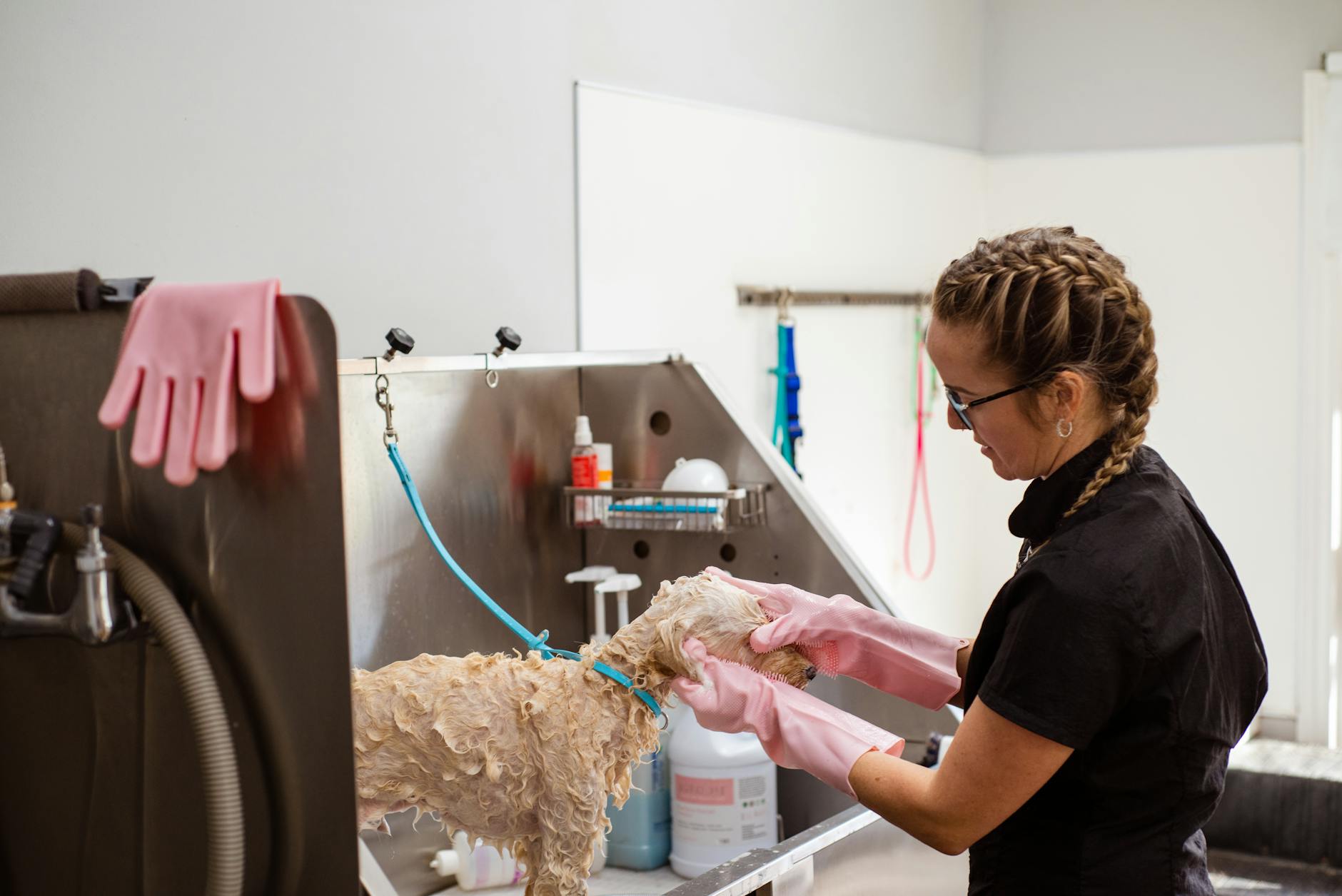Why Ethical Pet Training is Gaining Popularity in Australia

Ethical Pet Training Basics
Embarking on a journey to ethically train pets often involves a keen awareness of technological advancements and their impact. Those interested in sustainable pet training solutions, like the conscientious pet enthusiasts frequenting Sydney's lush trails at Centennial Park, might find technological tools such as bark collarsinvaluable. Such devices are designed not just for practicality, but also as alternatives to more harmful methods that could compromise the welfare of pets.
Amidst the vibrancy of Sydney Park, pet owners are focusing on training methods that have direct benefits for both their furry friends and themselves. Integral training aids, like a shock collar, should emphasise minimal intrusion and maximum safety. It is imperative to incorporate humane approaches that align with modern ethical standards when utilising these devices.
In today's urban environments, pet training must intertwine with the core principles of sustainability and ethical treatment. As urban spaces evolve, these training solutions can become part of multifunctional environments that nurture both pets and the public, offering a viable way to foster harmony in high-density settings. Consequently, through informed and thoughtful choices, pet owners can effectively integrate these tools while ensuring their actions remain compassionate and environmentally conscious.
Popular Methods in Australia
Positive Reinforcement Techniques
As an eco-conscious pet enthusiast, I'm always keen to explore ethical training methods that align with principles of sustainability and humane treatment. Positive reinforcement is a method I greatly advocate for. It involves rewarding pets for good behavior, which can be an effective and kindness-focused way to train your dog. Consider treats, praise, or toys as rewards when your pet follows commands or exhibits good behaviour. This approach creates a bond of trust and encourages a more harmonious relationship between you and your furry friend. If you’re in Sydney, you might enjoy practising these techniques amidst the vibrant community at Sydney Park.
Clicker Training and Its Impact
Clicker training, another prevalent technique, utilises a small device that emits a clicking sound to mark a desired behavior followed by a reward. This method serves as a precise and immediate feedback mechanism for your pet, enhancing their learning process. It's important to use the clicker consistently to reinforce positive behavior effectively. This non-intrusive technique is not only about results but also about maintaining a pet-friendly and stress-free environment.
Behaviour Modification Strategies
In addition to positive reinforcement and clicker training, there are various behaviour modification strategies to address specific behavioural issues. This might include the use of electric dog fence systems for containment, which provide a boundary without impacting the physical landscape. Such solutions are valuable in urban settings, offering a balance between safety and sustainability. Alongside using training products like dog travel accessories, it’s crucial to ensure your methods are in harmony with maintaining the natural aesthetics of your outdoor environment.
Innovative Pet Technology Solutions
Using Technology for Pet Freedom and Safety
As a pet enthusiast keen on sustainability, I'm constantly exploring innovative solutions like the hidden dog fence and anti barking collar that enhance both pet freedom and safety. These technological advances are game-changers, allowing landscaped urban spaces to remain aesthetically pleasing while delivering effective containment.
The hidden dog fence is an excellent tool for ensuring pets have ample space to explore without infringing upon landscaped areas or posing a risk to native fauna. This system seamlessly integrates into urban designs, addressing both Jake Mitchell’s professional challenges and personal interest in wildlife-friendly solutions.
Eco-Friendly Training Aids
In my eco-conscious journey, I find anti barking collars can complement ethical pet training methods. If selected mindfully, they offer a humane way to curb unnecessary barking without disrupting the soothing green spaces we value. Ensuring they operate without causing harm to the environment is crucial; opting for rechargeable batteries over disposable alternatives promotes sustainable practices.
Embedding Pet Solutions in Urban Design
Integrating these technologies into urban designs allows designers to craft inviting spaces like those along Barangaroo Reserve, where community members—both humans and their four-legged companions—can coexist harmoniously. With the right approach, these systems help maintain our commitment to sustainable and humane urban environments.
Challenges of Ethical Pet Training
Overcoming Common Misconceptions
Navigating the world of ethical pet training requires busting myths and misconceptions that often lead to confusion. One of the most common misunderstandings surrounds devices like anti bark collars. While some see them as restrictive, they can be beneficial when used correctly and humanely. It's about understanding how to use them efficiently without causing distress to the animal. Educating pet owners on the effectiveness of these tools, when combined with training techniques, paves the way for a balanced approach.
Addressing Urban Limitations
Urban settings present unique challenges for pet training. Limited space can make conventional training tools cumbersome. Here, technology offers elegant solutions. Products like the invisible dog fence are designed to maintain open spaces while ensuring safety and control. They seamlessly integrate into urban environments, letting pets enjoy freedom without the visible clutter of traditional barriers.
Meeting Safety and Environmental Standards
When choosing ethical pet training tools, maintaining safety and environmental harmony is crucial. For instance, ensuring that anti bark collars do not harm the pet or contribute to environmental degradation is paramount. Materials and technology should meet the highest standards. Pet-friendly urban design should incorporate these considerations without compromising the eco-friendly ethos cherished by communities.
Designing Eco-Friendly Urban Spaces for Pets
Ensuring Harmony with Wildlife
When we're crafting pet-friendly environments in Sydney's vibrant urban locales like Centennial Park or the scenic Barangaroo Reserve, one of our key priorities should be respecting natural habitats. As someone who cherishes the ecological integrity of such spaces, I always advocate for landscaping that incorporates native vegetation, which not only supports local wildlife but also minimises the environmental impact. Consider designing pathways that co-exist harmoniously with animal habitats, ensuring that our furry friends and the local flora and fauna thrive together.
Sustainable Solutions for Pet Infrastructure
Sustainability in pet infrastructure is no longer just an option; it's imperative. Opt for materials and technologies that are eco-friendly and durable. For instance, hidden dog fences are gaining traction as a humane alternative to traditional barriers. These fences, though technological, use minimal resources while effectively keeping our pets safe. Additionally, anti-bark collars that use ultrasonic frequencies can be an environmentally conscious choice over manual intervention, helping manage noise pollution in densely populated areas.
Enhancing Public Spaces for Pet Owners
Sydney's energetic pet owners, who often explore the trails of Sydney Park or the waterside paths of Barangaroo, need spaces that cater to both leisure and pets. Creating interactive zones where pets can roam and play freely, interspersed with rest spots crafted from recyclable materials, can enhance the usability of these locations. Such designs not only integrate well into urban settings but also foster a sense of community among pet lovers. By implementing these innovative solutions, we contribute to a sustainable urban ecosystem that both pets and their owners can cherish.


